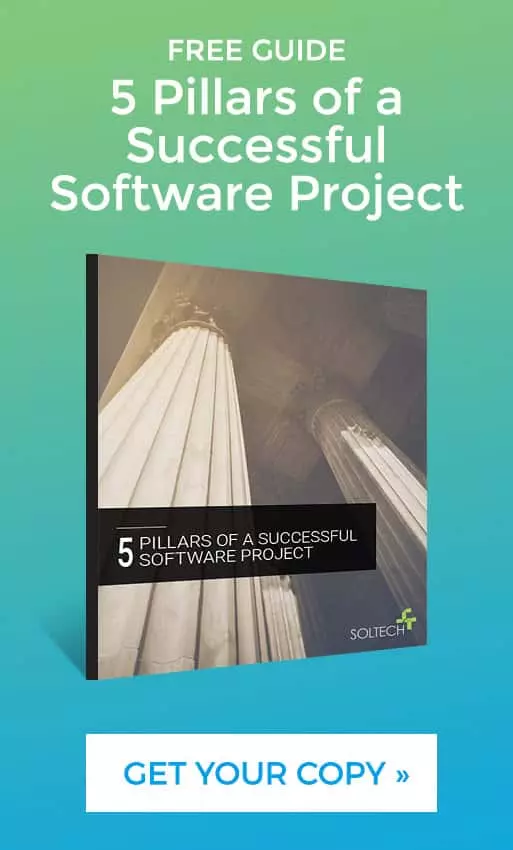
What are the Different Types of Software Estimates?
By Ann Mooney
Software estimates are a way to come up with a price to build a particular piece of software. Software estimates play a crucial role in determining the cost of building specific software. There are different types of approaches to estimating software development, each with its own level of detail and accuracy.
Some methods include relying on past experiences, using intuition or gut feeling, conducting high-level calculations, or creating a detailed plan with individually specified tasks. These approaches contribute to the final estimation of the project, ensuring that it is well-planned and budgeted for.
The Best Way to Estimate a Project
The best way to accurately estimate a project really depends on the type of estimate you need. Initially starting out, a rough ballpark figure is good in order to know if the project is feasible or not. As you move further along, getting more specific and detailed in what you want to build, your estimate needs to match.
When it comes to accurately estimating a project, the best approach depends on the specific requirements. Initially, a rough ballpark figure can provide an idea of the project’s feasibility. However, as the project progresses and becomes more defined, the estimate needs to be more specific and detailed.
It is important to ask relevant questions to gauge the quality and accuracy of the estimates received. Understanding the assumptions made, the level of detail included, and any potential exclusions can help in making informed decisions.
Ask these project questions to get started
- Can I use this figure for getting funding from investors?
- How much detail has gone into this estimate?
- What assumptions have been made?
- Is there anything this estimate does not include that I might need?
- How confident are you that you can hit this estimate with my project?
- What is your track record with this level of estimate and projects like mine?
- How similar is my project to others you have done?
Creating Detailed Estimates
Assuming your project is billed as Time & Materials before you start development you will want to get a detailed estimate. The goal of the detailed estimate is not in arriving at details, but in getting the accuracy you need to budget and get funding.
There are many moving parts in software: environment set up, planning, coordination, creative design, architecture, front-end development, business logic, data management, reporting, interfacing with 3rd party systems, and testing to name a few. Writing the tasks down not only helps to assure that everything is included, but that the estimates across the board are in line.
For example, if designing the administration component of your application looks 2-3 times larger than building the main functionality, you can start to ask questions to gain a better understanding. Maybe it will take more effort or maybe there is a mistake. You can also see if any functionality is missing or listed twice. When dealing with a large project estimate, it is not unheard of to make a few mistakes.
One approach of estimation we found works well for our clients is to group tasks by feature. This again lets you see if certain features seem heavier than others so you can cross-check for errors or misunderstandings, but it also allows you to weigh the cost vs. value if you need to cut scope and postpone items for a later release.
Understanding Software Project Estimations
Ultimately estimation is a best guess and target goal based on the experience and calculations of your software project team.
Your software team will most likely factor in a buffer to accommodate unknowns based on their experience and the types of projects they handle. But as the person reviewing and approving the estimate, it is good to understand that even the best software estimate is still an estimate. Some tasks will be completed faster and others slower than predicted.
The Checklist For Sharing Your Software Vision
Before you get started in developing your software app, your thoughts and ideas should be clarified and written down so they can be consistently and easily shared and understood. To help you get started on the right foot, we have created a checklist.
Ann Mooney
Director of Business Development Ann Mooney is the Director of Business Development at SOLTECH, and has over 30 years in Sales and Account Management in the Technology, Telecommunications, and Medical Industries. Ann’s key specialties are building long-term business relationships, results-driven sales, and account management.
Ann Mooney is the Director of Business Development at SOLTECH, and has over 30 years in Sales and Account Management in the Technology, Telecommunications, and Medical Industries. Ann’s key specialties are building long-term business relationships, results-driven sales, and account management.
Ann joined SOLTECH in 2016, she works directly with SOLTECH’s clients to help find them the best technology solutions for their business. Ann utilizes her strategic leadership and proactive problem-solving skills to continually grow SOLTECH’s business and ensure excellent customer service.
With her years of experience in the technology industry, Ann likes to share her expertise to educate her audience on the enhancement of workplace productivity and growth through software solutions in her articles. Her insights offer advice on important considerations for creating custom software, including initial steps, development costs, and timelines, as well as the advantages of collaborating with a skilled software development team.






